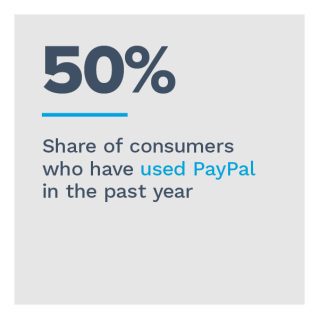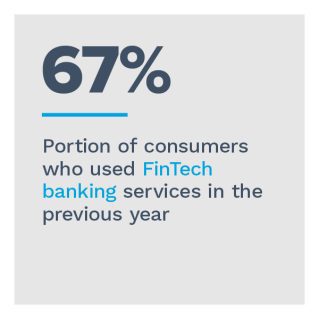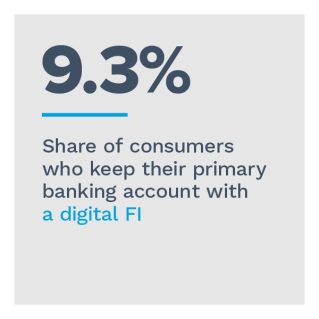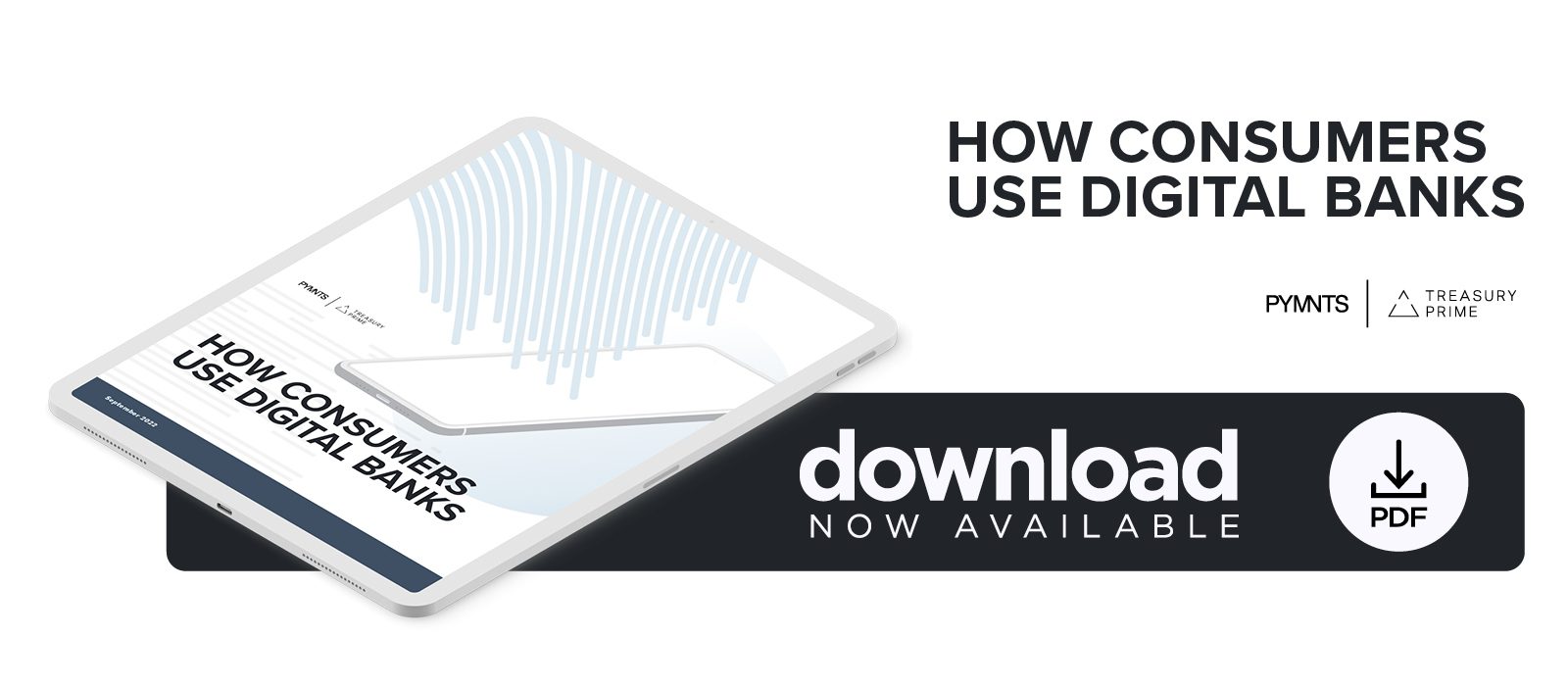Study Finds Fewer Than 10% of Consumers Use FinTechs as a Primary Bank

Most people have tried digital banking, but they may not have realized it. PayPal and Venmo are both already mainstream, and many digital-only banks are ready for consumers to transfer their primary accounts. Many consumers are not yet prepared to cut ties with their traditional financial institutions (FIs) and go fully digital, however.
But PYMNTS’ data finds that this status quo is starting to change as consumers become curious about the benefits of digital banking, including easier transfers, lower costs and better notifications.
For “How Consumers Use Digital Banks,” a PYMNTS and Treasury Prime collaboration, we surveyed 2,124 consumers about their experiences with digital banking to learn about their current habits, examine the digital banking services they seek and discover which features would encourage consumers to switch to a digital bank.
• Although 39% of consumers say digital banks can be true alternatives to traditional banks, more than half have no plans to switch to a digital bank.
 We found that 53% of respondents are not even considering making digital banks their primary banks, and 47% are hesitant about digital banks and want to learn more before making any decisions. Of those surveyed, 34% of consumers cited satisfaction with their current bank as the most important reason for disinterest in digital banks, and 13% wanted to retain access to physical branches.
We found that 53% of respondents are not even considering making digital banks their primary banks, and 47% are hesitant about digital banks and want to learn more before making any decisions. Of those surveyed, 34% of consumers cited satisfaction with their current bank as the most important reason for disinterest in digital banks, and 13% wanted to retain access to physical branches.
• Three out of five consumers are at least somewhat interested in using a digital bank in the next year, primarily for easy money movement to third parties. A little more than one-third of respondents are very or extremely interested in using a digital bank in the next year, largely for lower costs.
Millennials, in particular, are interested in digital banks because they perceive these institutions as more secure and believe that digital banks provide earlier access to the newest technologies. Some of the perceived benefits include additional flexibility around sending money to others, mobile check deposits, cash advances and the opportunity to buy or trade cryptocurrencies.
 • Nontraditional customers for classic FIs — millennials, small- to medium-sized business owners and financially-stressed consumers — are most likely to make a digital bank their primary bank. More than three-quarters of each use digital banking services.
• Nontraditional customers for classic FIs — millennials, small- to medium-sized business owners and financially-stressed consumers — are most likely to make a digital bank their primary bank. More than three-quarters of each use digital banking services.
PYMNTS’ data finds that 85% of freelancers, 84% of millennials, 83% of small business owners and 78% of consumers who live paycheck to paycheck and have issues paying their bills use digital banking services. Data shows that consumers who prefer banking with neobanks or digital banks are more likely than individuals who prefer traditional FIs to value banks that align with their occupations or values, and they are less likely than the traditionalists to care about traditional offerings such as mortgages.
Consumers, in general, are still sticking with traditional FIs, but digital banking is going mainstream — and its time in the limelight might be rapidly approaching.
To learn more about the future of digital banking, download the report.
